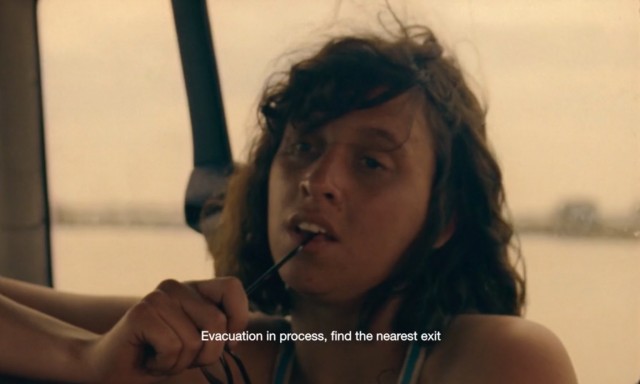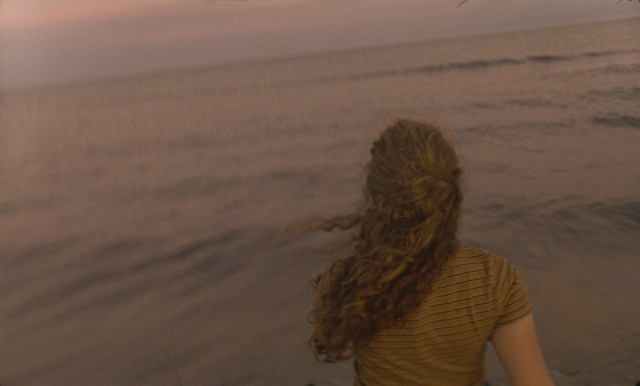There’s a strong belief that in apocalyptic storytelling, the threats the creator serves us are actually metaphorical representations of tensions that exist in the real world. If that’s the case, then director Servane d’Alverny thinks we’re pretty f*cked and it’s hard to disagree with her. Set in a ‘world on fire’, her London Film School short Shoegazing portrays a desolate future where violence is commonplace and hope is scarce.
Narratively, one could argue that not a lot happens in d’Alverny’s 13-minute film. As we follow Gabrielle and her friends as they journey across the barren landscape, to an unknown destination, we witness them crack jokes, annoy each other and nonchalantly bludgeon a man to death (we don’t actually see that, but we’re left in no doubt). But like that popular and frequently used jazz adage, Shoegazing works because of what the filmmaker decides to leave out, it’s the notes she doesn’t play here that makes it such an interesting and impactful film.

Indications of some end-of-days events are filtered through to the audience in drips, like this message on the vehicle’s radio.
The “situation” in the film is never directly addressed by its characters and the first indication we get that all is not right in the world comes from the sound of sirens that carry on the wind and shorts snippets we overhear on the radio. While visually, the earliest sign of devastation comes over halfway into the film, as Gabrielle wanders off to fill a petrol canister a dead body is casually framed at the bottom of the screen like it’s no big deal. It’s obvious from this that d’Alverny doesn’t want to focus on the specifics of her particular apocalyptic vision and instead wants to focus on life afterwards, asking her audience: How would you cope in the same situation? In a way, by leaving the viewers to fill in the blanks in her story it works to amplify the relatability and universality. What has set this world on fire? Was it environmental, biological, man-made? It’s up to you to decide.
“I wanted to talk about the feeling of anger that I have about reading the news every day”, d’Alverny reveals, adding that she hopes her film makes her audience think about “how to deal with that despair while still connecting to one’s emotions instead of shielding from them, and isolating”. Revealing that her main character’s journey is her “own understanding of how to deal with catastrophic situations”, Shoegazing is a character-driven film, the people, their reactions and their emotions are more important than their actions.

“The film is shot on 16mm stock to make the audience physically feel the world, the heat, the texture of their skin as they live on top of each other” – d’Alverny discussing Shoegazing’s aesthetic
Describing the almost vignette approach to her storytelling as “small pictures-poems in the ruin of the world”, Shoegazing compliments its unconventional narrative structure with a distinct 16mm aesthetic. Opting to shoot on film as she wanted the audience to “physically feel the world” there’s an undeniable tangible quality to the visuals where we feel as if we’re in the van with this band of young travellers. The handheld camerawork helps as well, whether it’s capturing the confines of their vehicle or closely following a blood-soaked Gabrielle as she returns from collecting gas, it’s clear the production was designed to immerse us in this universe and it succeeds.
If you’re at the end of this article and yet to watch Shoegazing, you might be asking yourself: Why would I want to watch another end-of-days narrative? Especially now! A lot of the appeal of apocalyptic storytelling is said to come from the idea of being able to start anew – the world is broken, so we must rebuild – and this seems to be the message radiating from d’Alverny’s short. The film doesn’t hone in on the despair and instead centres itself around friendship and belonging and though I opened this article by claiming it depicts a future where hope is scarce, the conclusion of Shoegazing carries a sense of optimism with it. As we witness a still bloodied Gabriel float in the sea, the vision of a baptism springs to mind. Whether she’s washing away personal sins or those of the entire world is unclear, but a new beginning looks to be on the horizon and we leave the film refreshed – which is some achievement considering all that has come before it.
Shoegazing was completed while d’Alverny was studying at the London Film School and the filmmaker is now working on a new short – Les Petites Bêtes (Small Beasts) – and two features – Les Bestioles (Bugs) and Artichaut (Artichoke).

 Rob Munday
Rob Munday